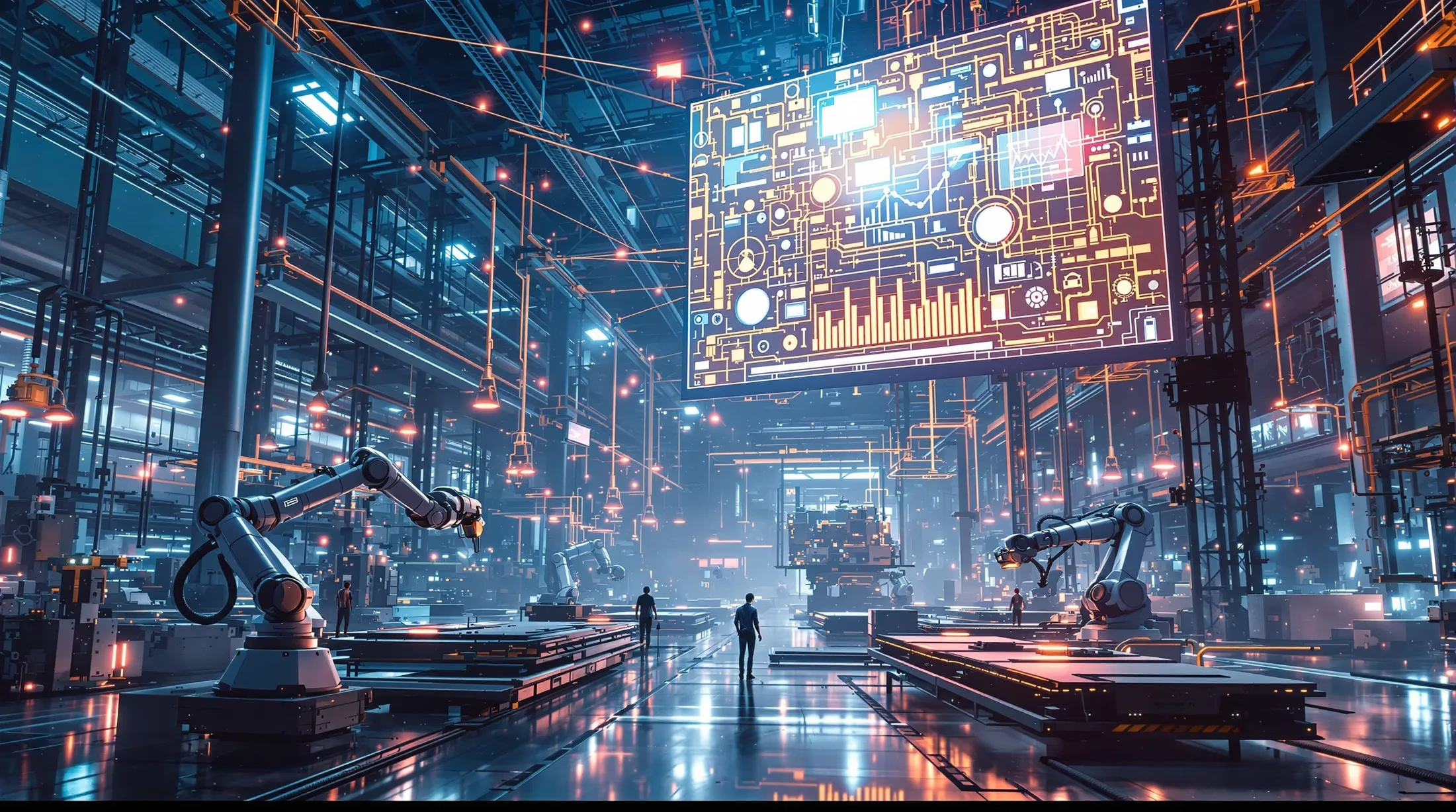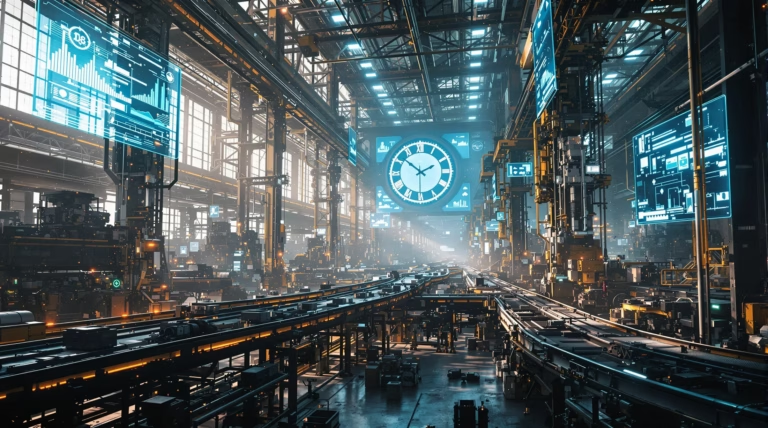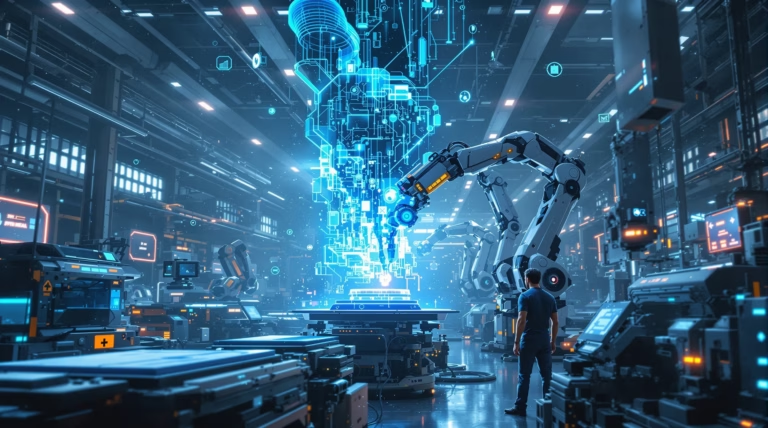Factory Digitalization: Transforming Manufacturing for the Future
The manufacturing landscape is undergoing a revolutionary transformation through factory digitalization. This comprehensive guide explores how digital technologies are reshaping production processes, creating smarter and more efficient manufacturing environments. Let’s dive into the key aspects of this technological evolution.
Understanding Factory Digitalization
Factory digitalization represents a fundamental shift in manufacturing operations, transitioning from traditional methods to data-driven, interconnected systems. This transformation enables manufacturers to create scalable factory models that enhance planning, execution, and continuous improvement through real-time optimization.
Advanced computer systems now model, simulate, and analyze every aspect of the manufacturing process, including:
- Equipment performance and maintenance
- Tooling optimization
- Material flow management
- Workflow efficiency
- Production scheduling
What is Factory Digitalization?
Factory digitalization creates a comprehensive digital ecosystem where information flows seamlessly between machines, systems, and personnel. This transformation involves developing detailed digital models of factory operations with the following components:
- Sensor networks for real-time monitoring
- Automated control systems
- Advanced analytics platforms
- Digital twin representations
- Integrated communication networks
The Role of Industry 4.0 in Digitalization
Industry 4.0 serves as the foundation for modern factory digitalization, integrating Industrial Internet of Things (IIoT) technologies with cloud-based monitoring and control systems. This framework enables:
| Capability | Benefit |
|---|---|
| Real-time monitoring | Immediate response to operational changes |
| Data-driven decision making | Enhanced operational accuracy |
| Connected workforce | Improved collaboration and efficiency |
| Smart equipment integration | Optimized resource utilization |
Key Technologies Driving Factory Digitalization
The digital transformation of manufacturing facilities relies on several cutting-edge technologies:
- Industrial Internet of Things (IIoT) for device connectivity
- Artificial intelligence and machine learning algorithms
- Big data analytics for pattern recognition
- Advanced robotics and automation systems
- Cloud and edge computing infrastructure
- Predictive maintenance solutions
Smart Manufacturing and Automation
Smart manufacturing integrates physical production systems with digital technologies, creating adaptive and efficient factories. The core components include:
- Intelligent machines with advanced sensing capabilities
- Self-regulating production systems
- Computer-aided design and manufacturing (CAD/CAM)
- Collaborative robotics
- 3D visualization tools
- Advanced motion control systems
The Impact of IoT in Manufacturing
The Internet of Things is revolutionizing manufacturing through hyperconnected factory environments that generate valuable data from every machine, product, and process. Smart sensors embedded throughout production equipment provide continuous monitoring of:
- Performance metrics and operational parameters
- Environmental conditions and system status
- Asset location and inventory levels
- Resource utilization patterns
- Supply chain efficiency metrics
IoT enables sophisticated process automation and control through interconnected systems that automatically optimize production parameters. The integration with robotics has advanced automation capabilities, introducing collaborative robots that work safely alongside human operators. Factory workers benefit from enhanced situational awareness through mobile devices and wearables delivering contextual information. This connectivity creates end-to-end visibility across the manufacturing ecosystem, connecting facilities with suppliers and customers in a seamless digital network.
Cyber-Physical Systems and Their Importance
Cyber-physical systems (CPS) represent an advanced integration of digital computation with physical processes, creating networks where software and hardware components interact seamlessly. In manufacturing environments, these systems establish a continuous feedback loop between:
| Component | Function |
|---|---|
| Sensors | Monitor physical processes continuously |
| Analytics | Process data using advanced algorithms |
| Actuators | Control physical equipment autonomously |
| Digital Twins | Create virtual replicas for simulation |
CPS serves as the cornerstone of smart manufacturing, enabling production systems to become more intelligent and self-optimizing. This integration allows for real-time optimization based on current conditions, facilitating higher levels of automation, quality control, and resource efficiency while maintaining adaptability in dynamic manufacturing environments.
Benefits of Factory Digitalization
Digital transformation in manufacturing delivers substantial competitive advantages, with digitally transformed factories reporting 15-20% productivity increases. These improvements stem from optimized resource allocation, streamlined workflows, and reduced downtime. The enhanced operational flexibility enables manufacturers to quickly adapt production schedules, reconfigure manufacturing lines, and introduce new products with minimal lead times.
Enhancing Efficiency and Productivity
Data-driven manufacturing identifies and eliminates hidden production bottlenecks through advanced analytics, typically improving overall equipment effectiveness (OEE) by 10-15% within the first year. Digital solutions enhance workforce effectiveness through:
- Digital work instructions and augmented reality guides
- Real-time performance feedback systems
- Automated administrative tasks
- Enhanced operator decision support
- Streamlined workflow management
Improving Quality and Reducing Waste
Digital quality control systems with in-line sensors and real-time analytics enable immediate defect detection, reducing defect rates by 20-30%. The comprehensive waste reduction benefits include:
- Optimized material usage through improved cutting patterns
- Reduced energy consumption through efficient equipment operation
- Minimized inventory holding requirements
- Prevention of catastrophic equipment failures
- Decreased environmental footprint by 10-15%
Challenges in Implementing Factory Digitalization
Factory digitalization implementation presents several complex challenges that manufacturers must address strategically. The initial investment requirements are substantial, covering specialized equipment and customized systems for specific production environments. Organizations face the dual challenge of maintaining current operations while implementing future-proof solutions that can scale with technological advancement and operational growth.
- Substantial initial investment requirements
- Complex integration with existing systems
- Cybersecurity and data protection concerns
- Production continuity maintenance
- Scalability and future-proofing challenges
Overcoming Technological Barriers
Selecting appropriate technology solutions represents a critical challenge in factory digitalization. Manufacturers must evaluate various options while ensuring compatibility with existing infrastructure:
| Challenge Area | Implementation Consideration |
|---|---|
| Technology Selection | Evaluation of sensors, IoT devices, analytics platforms |
| Legacy Integration | Compatibility with existing equipment and systems |
| Data Security | Protection of sensitive manufacturing data |
| System Interoperability | Seamless data flow between different generations of technology |
Addressing Workforce Skill Gaps
Digital transformation creates unprecedented demands for new skill combinations in manufacturing environments. The workforce transformation challenge encompasses multiple dimensions:
- Integration of traditional manufacturing expertise with digital capabilities
- Upskilling existing workforce while maintaining production
- Creating comprehensive training programs for technical and adaptive skills
- Developing clear career advancement paths
- Managing resistance to technological change
Future Trends in Factory Digitalization
The evolution of factory digitalization continues to accelerate, bringing unprecedented levels of intelligence and efficiency to manufacturing processes. This transformation is driving significant improvements in production capabilities:
- Substantial cost reductions through optimized operations
- Dramatically shortened production cycles
- Enhanced product customization capabilities
- Improved resource efficiency and sustainability
- Advanced workforce development programs
The Rise of Digital Twin Technology
Digital twin technology represents a transformative advancement in manufacturing digitalization, offering sophisticated virtual modeling capabilities:
- Real-time equipment performance monitoring
- Virtual process optimization and testing
- Predictive maintenance capabilities
- Risk reduction in implementation
- Enhanced decision-making through simulation
This technology enables manufacturers to conduct virtual experiments, optimize workflows, and identify potential issues before they impact physical operations, significantly reducing design-to-production time and improving operational efficiency.
Predictive Maintenance and Analytics
Predictive maintenance represents a revolutionary shift from reactive or scheduled maintenance approaches to data-driven strategies that anticipate equipment needs before failures occur. Advanced analytics algorithms process data from networked sensors throughout production equipment, identifying subtle patterns that precede component failures.
- Downtime reduction of 30-50% compared to traditional approaches
- Maintenance cost savings of 10-40%
- Real-time monitoring and pattern identification
- Proactive issue resolution during planned downtime
- Continuous learning and model refinement
| Analytics Application | Operational Benefit |
|---|---|
| Historical Data Analysis | Accurate failure forecasting |
| Supply Chain Integration | Automated parts ordering |
| Maintenance Scheduling | Optimized resource allocation |
| Performance Monitoring | Early issue detection |
The integration of predictive analytics with supply chain management creates additional efficiencies, as parts ordering becomes automated based on projected maintenance needs rather than arbitrary schedules or emergency requests. This holistic approach transforms maintenance from a cost center to a strategic advantage in the competitive manufacturing landscape, ensuring replacement parts and qualified technicians are available precisely when needed.







